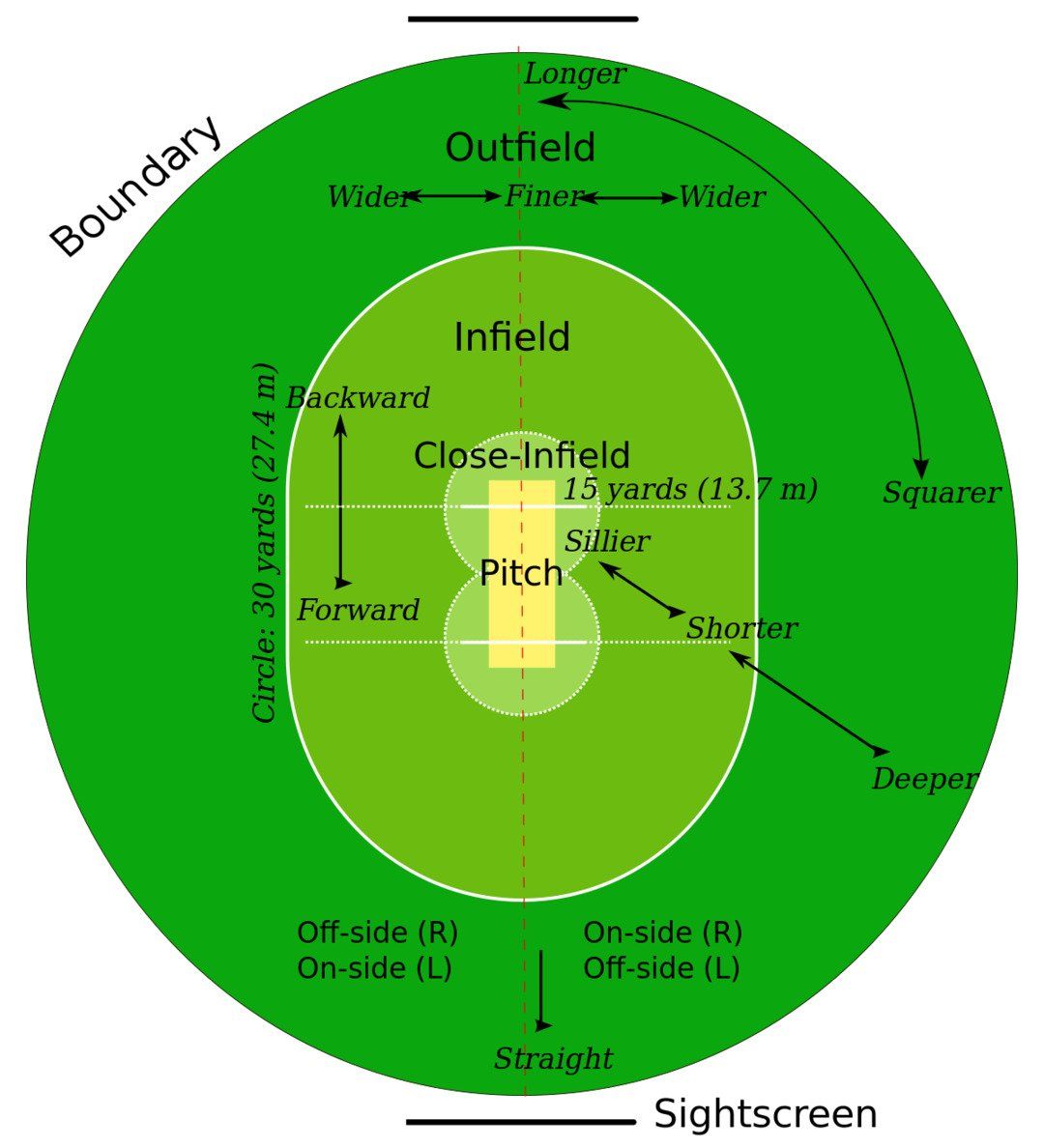
What does spread mean in betting
“To me, cricket is a simple game. Keep it simple, just go out and play.” - Shane Warne
Cricket, fondly known as the Gentleman’s game, is much more than what the Australian legend was quoted saying. It is an emotion in itself. It is about the dreams of 4.5 billion people of the nations which participate in this great sport. But more than anything, it is a game of strategy.
Cricket has evolved multiple times in the past century. More formats have come up since the original Test Cricket. This has been directly correlated to the increase in the number of nations participating in the sport. However, a different entertainment angle has also resulted in the diversification in the game.
In today’s article, we try to decode the game of cricket right from scratch. In this guide of cricket rules for beginners, we shall take a look at all the different rules surrounding the game. We will also explain the different nuances of the game from a beginner’s point of view.
Batting - In batting, a cricket player known as the batsman, tries to score runs for his team by hitting the ball with the bat.
Bowling - In bowling, a cricket player known as the bowler, tries to prevent the batsman from scoring runs by propelling the ball towards him.
Over - An over in cricket is a series of six bowling deliveries.
Delivery - When a bowler bowls one ball towards the batsman, it's known as a Delivery.
Cricket Run - When one point is awarded to the batting team and is added to their team total, it is known as one Run.
Wicket-keeper - A wicket-keeper is a player in cricket who stands certain yards behind the stumps of the receiving end. His job is to catch the ball if the batsman gets a slight edge on the ball with his bat. In such a situation, the bowling team can claim the wicket of the batsman.
Crease - Crease is a 1.22-metre box in front of the stumps on either sides of the 22-yard box.
Off-side and Leg-side - For a batsman, the side of the pitch he is facing is known as the Off-side. While the other side where he faces his back is known as the Leg-side.
Stumps & Bails - Stumps are three same sized sticks rooted in the ground on either sides of the 22-yard pitch. The two objects that sit atop the stumps are known as Bails.
Free Hit - When a bowling team bowls a No Ball in Limited Overs Cricket, the batting team is awarded a Free Hit (apart from the perquisites of the No Ball). A Free Hit means that on the next delivery, the batsman cannot be Bowled Out or Caught Out. He can only be Run Out.
Primarily, there are two cricket formats which are played worldwide. These formats are then modified and adapted in various parts of the world.
The Teams - Each side plays the game with eleven players. The eleven players consist of batsmen, bowlers and one wicket-keeper. Both teams can have substitutes for contingencies. The foremost substitute player is called ‘The Twelfth Man’.
The Game - At a single time, two batsmen play the game from the batting side. The batsman on the receiving end of the ball is known as the batsman on strike. While the other batsman on the other end of the 22-yard pitch is known as the batsman on the non-striker’s end. A bowler bowls six deliveries (one over) to the batsmen. No bowler can bowl two overs consecutively. An umpire (referee) officiates the game from behind the stumps near the non-striker’s end.
The Cricket field map - The game is played on a field with some specific markings. In the centre of the field is the cement pitch which stretches to a distance of 22 yards. This is the area where the real action takes place. Moreover, there is another elliptical area of subordinate significance. The 30-yard circle surrounding the pitch is marked for placing some restrictions on the fielding (bowling) team.
Cricket field map. Wikimedia Commons/Nichalp
A game of cricket is played over two innings in Limited Overs Cricket (four in Test Cricket). One inning is defined as a period of time when each side is either batting or bowling. It is said to be finished when the bowling team manages to claim 10 wickets of the opposition. An inning can also be termed as completed when the bowling team bowls the specified number of overs (50 or 20) in Limited Overs Cricket.
The runs that have been scored during the inning become the target that the initial bowling team has to chase in their succeeding inning. The team who bowled in the first innings has to bat in the second one. If the team batting in the second inning manages to score more runs than the opposition did in the first inning, they win the match. If they fail to do so, they lose the fixture. The game is drawn if both the teams score the equal number of runs.
A batting team can score runs in the following ways:
Running between the wickets - If a batsman hits the ball with the bat and manages to cross-over with the batsman on the non-striker’s end on the 22-yard pitch, it is counted as one run. If both the batsmen manage to cross the pitch multiple amounts of time, then multiple runs are granted.
Boundaries - If a batsman on the striker’s end manages to hit the ball past the ropes surrounding the ground or out of the park into the audience’s stands, it is called a boundary. The runs are then awarded on the type of the boundary. If the ball touches the ground even once before passing the ropes, four runs are awarded. If the ball directly passes the ropes without any contact with the ground, six runs are awarded.
No ball - If the bowler’s foot crosses the furthermost line of the crease on his end while propelling the ball, the delivery is called a No Ball. One run is awarded to the batting team. Also, the ball is not counted and has to be rebowled by the bowler.
Wide Ball - If the delivery of the bowler passes the batsman from the leg side or the widest part of the crease or way above his head, this rule in cricket is called a Wide Ball. The idea is to provide the batsman an opportunity to replay the ball as it was not possible to reach the ball in normal circumstances. One run is awarded to the batting team. Also, the ball is not counted and has to be rebowled by the bowler.
Byes - When the ball hits any part of the batsman’s body and the batsmen run between the wickets, the runs are awarded as Byes. In such a case, the runs are not added to the batsman’s tally but are directly added to the team total. If the part of the body in consideration is any part of the leg, the Byes in cricket are termed as Leg-Byes.
The bowling team needs to claim ten wickets to end the batting team’s innings. The wickets can be taken in the following ways:
Bowled - If the batsman fails to hit the ball and the bails of the stumps go off after the ball hits them, the batsman is termed as Out. He has to leave the field and another player from the batting side takes his place. This hands the bowling team one wicket.
Caught Out - If the batsman hits the ball and any player from the batting team including the wicket-keeper or the bowler manages to catch the ball without it touching the ground, the batsman is considered to be caught out.
Run Out - If the bowling (fielding) team manages to strike the bails off either set of stumps before the batsmen have reached the crease, it is termed as Run Out. The batsmen running towards the end where the bails have been taken off is termed as Out and the bowling team gets one wicket.
Stumped - This is the real virtue of a wicket-keeper. If the batsman on striker’s end fails to hit the ball and is out of the crease, the wicket-keeper behind the stumps can strike the bails off with the ball. This hands the bowling team one wicket and the batsman has to return back as Out.
Leg Before Wicket (LBW) - If the ball hits the batsman on his leg after him failing to hit it and the leg acts as on obstruction in front of the stumps, it is called Leg Before Wicket (LBW). It hands the bowling team a wicket.
Many new rules have come up as and when the game has advanced over the years. But the basics have still remained the same throughout. For anyone to become a successful cricketer, the general rules of play need to be mastered. The basics can then be turned into complex tactics and strategies to get an advantage over the opposition team.